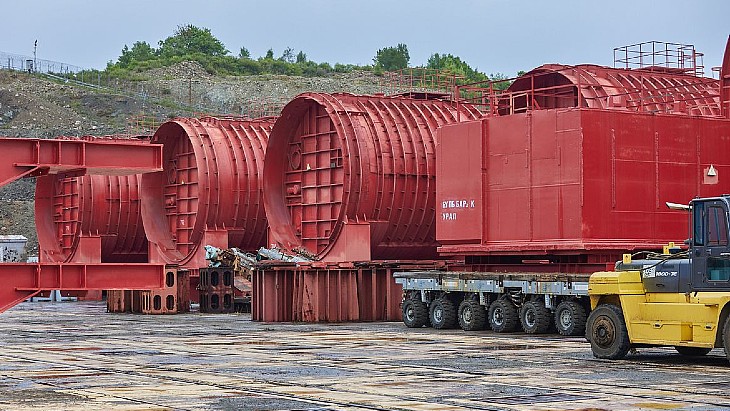Orano completes ageing inspections at US dry storage facilities
.jpg)
The 'lead canister' at each of the Independent Spent Fuel Storage Installations (ISFSIs) was inspected to fulfil US Nuclear Regulatory Commission (NRC) licensing requirements for continued storage of used fuel in dry storage systems and site environmental evaluation criteria established by the Electric Power Research Institute (EPRI), Orano said. The Certificate of Compliance (CoC) for the NUHOMS storage system - CoC-1004 - was approved by the NRC for an initial storage duration of 20 years. The NRC's renewal of the CoC has extended the system's licensed storage duration by another 40 years, for a total of 60 years. The above-ground NUHOMS dry storage systems are designed to continue operating safely for more than 100 years, according to the company.
Inspections were carried out by robots: a slim delivery robot carried a smaller crawler robot between the concrete block storage modules and into the module's cavity through a ground-level side inlet ventilation slot. The crawler robot was then raised to the used fuel canister's side, where it detached and adhered with suction while moving and visually examining the canister's surface for any indications of SCC. The robots also examined the concrete module's interior surfaces for degradation. Orano has released a video of the robot inspecting the used fuel canister inside the module.
Extensive EPRI and NRC analyses have shown that dry storage of used nuclear fuel is a secure method of interim storage with an ageing management programme, Orano said. The analyses have also verified that chloride-induced stress corrosion cracking (CISCC) is the most likely potential degradation that could affect a stainless steel used nuclear fuel canister. Orano's teams conducting these periodic ISFSI inspections include procedures to address this issue.
"The possibility of CISCC is well understood by Orano and the industry," said Amir Vexler, president of Orano NPS in the USA. "We know how to find it before it becomes a problem, and we know how to fix it, if it ever does show up."
NRC-approved analyses and evaluations carried out as part of the system's design and licensing have verified that the likelihood of CISCC on Orano's canisters is a low probability occurrence and would require more than 100 years of unattended degradation to become a concern. Mitigation methods can be used to fully restore a canister at any stage of CISCC degradation, Orano said.
In addition to the three ISFSI inspections carried out last year for CoC-1004, Orano said it has previously supported ageing management programme inspections for 20-year-old NUHOMS systems at two other sites, also with no concerns identified. The most recent inspection data has been added to the US Institute of Nuclear Power Operations-hosted Ageing Management INPO Database to share the benefits and lessons learned from dry storage operating experience.
Dry cask storage allows used fuel assemblies that have already spent some time cooling in ponds to be stored in dry casks or vaults, typically with air circulation inside concrete shielding. It has been used at US nuclear power plants since 1986, and according to World Nuclear Association, at least one-third of the USA's total used fuel is now in dry storage casks. As of September 2019, 3069 casks had been loaded at 72 ISFSIs in the USA.
Orano NPS is a business subsidiary of Orano and was previously known as Orano TN.
_17992.jpg)
_75800.jpg)








_88592.jpg)

